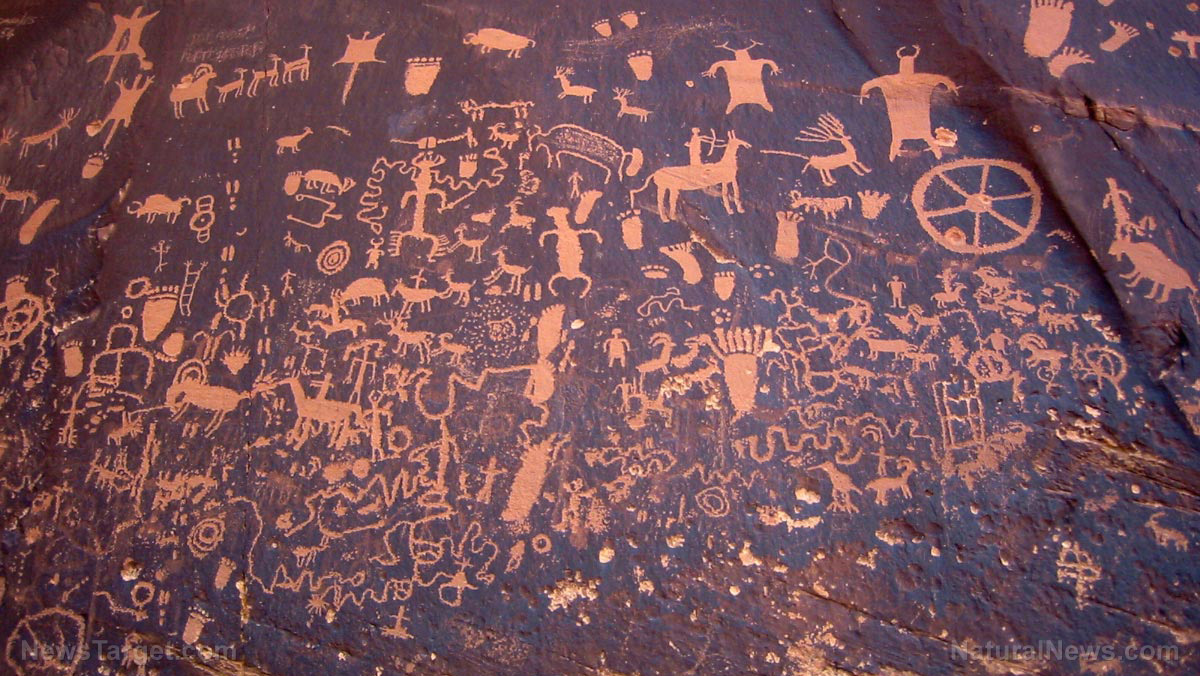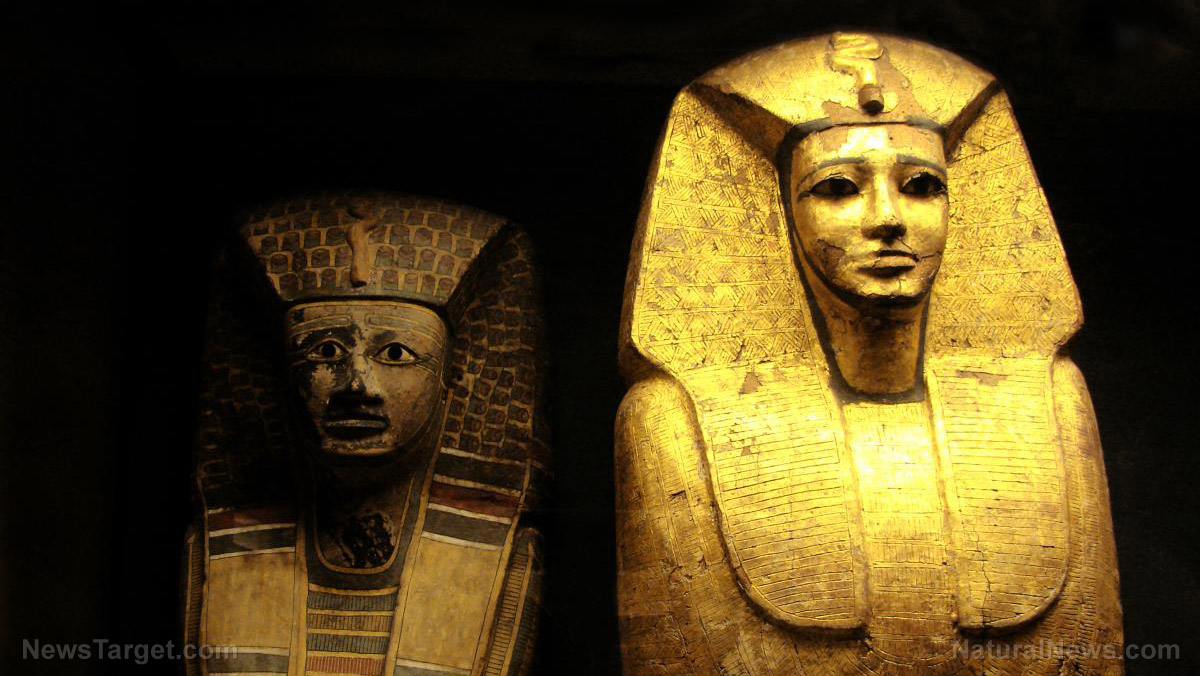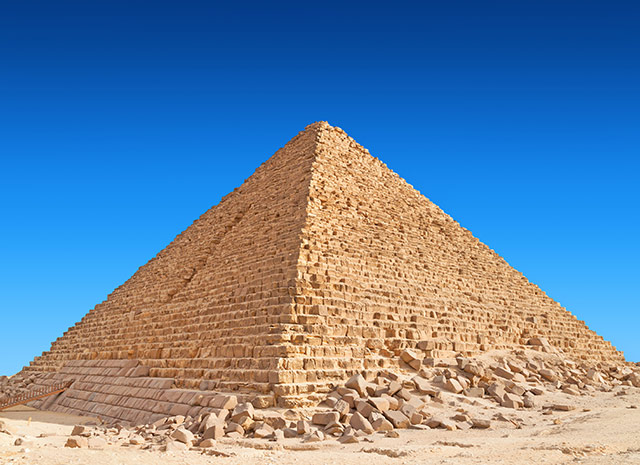Meteorite impact 29M years ago responsible for desert glass, geologists say
01/12/2023 / By Kevin Hughes

Desert glass, a rare kind of glass found in the sandy environments of the Levant, is possibly a product of a meteorite impact that happened millions of years ago.
The material, also called Libyan desert glass, is widely spread across the sands of the Sahara Desert. It has even been used in several ancient jewelry pieces. Two such pieces – a scarab carved from desert glass and a piece of pectoral jewelry – were buried alongside King Tutankhamun’s tomb.
Glass is often formed from silica sand that melts at high temperatures. When molten material cools too fast, the molecules are unable to arrange in order and structure similar to a crystal and make glass in the process.
Back in 2019, geologists tried to determine what event caused Levantine desert sand to become desert glass.
According to the geologists, a meteorite that fell to Earth 29 million years ago was responsible for the creation of desert glass. They also looked at the possibility of desert glass being generated as a result of airbursts, which happen when asteroids called near-Earth objects explode and deposit energy in the Earth’s atmosphere. (Related: Ancient “desert glass” turns out to be from a 29-million-year-old meteorite.)
“It has been a topic of ongoing debate as to whether the glass formed during a meteorite impact or during an airburst,” geologist Aaron Cavosie of Curtin University in Australia said in a statement. “Both meteorite impacts and airbursts can cause melting.”
To settle the debate, Cavosie and another geologist colleague examined pieces of desert glass under a high-powered scanning microscope. According to the researchers, zircon crystals inside the glass pieces had once been reidite – a mineral that only forms under very specific high-pressure conditions. A meteorite falling to Earth can cause the formation of reidite, but not a space rock’s explosion while in the air.
“Only meteorite impacts create shock waves that form high-pressure materials, so finding evidence of former reidite confirms it was created as a result of a meteorite impact,” said Cavosie.
Sahara sands conceal crater of meteorite responsible for desert glass
According to the two geologists, the airburst explanation for the formation of desert glass is out of the question given the presence of reidite in the samples they examined. They added that geologists have not yet discovered any evidence of relatively current glass samples free of reidite, and that even enormous airbursts do not have serious outcomes on the ground.
Whether or not the glass-making space rock hit the ground, both Cavosie and his colleague acknowledged the enormous size of the culprit meteor. Even though a crater matching the meteor’s impact has not yet been identified, the sandy dunes of the Levant could be hiding it.
“Previous models suggested that Libyan desert glass represented a large, 100-megaton class airburst, but our results show this is not the case. Meteorite impacts are catastrophic events, but they are not common. Airbursts happen more frequently, but we now know not to expect a Libyan desert glass-forming event in the near future, which is cause for some comfort,” Cavosie said.
Visit Space.news for more news about meteorites falling to Earth.
Watch this video about the Hoba meteorite leaving no crater when it fell to Earth.
More related stories:
Study: Fiery “airburst” of superhot gas crashed into Antarctica millions of years ago.
2 New minerals discovered inside meteorite that crashed to Earth.
Astronomers conduct “planetary defense” exercise to prepare for extinction-level events.
Extraterrestrial impact may have caused abrupt climate change 12,800 years ago, research suggests.
Sources include:
Submit a correction >>
Tagged Under:
Aaron Cavosie, airburst, asteroid impact, breakthrough, cosmic, desert glass, discoveries, environment, Levant, Libyan desert glass, meteorite impact, minerals, real history, reidite, Sahara Desert, Space, zircon
This article may contain statements that reflect the opinion of the author
RECENT NEWS & ARTICLES
COPYRIGHT © 2018 REALHISTORY.NEWS
All content posted on this site is protected under Free Speech. RealHistory.news is not responsible for content written by contributing authors. The information on this site is provided for educational and entertainment purposes only. It is not intended as a substitute for professional advice of any kind. RealHistory.news assumes no responsibility for the use or misuse of this material. All trademarks, registered trademarks and service marks mentioned on this site are the property of their respective owners.




















